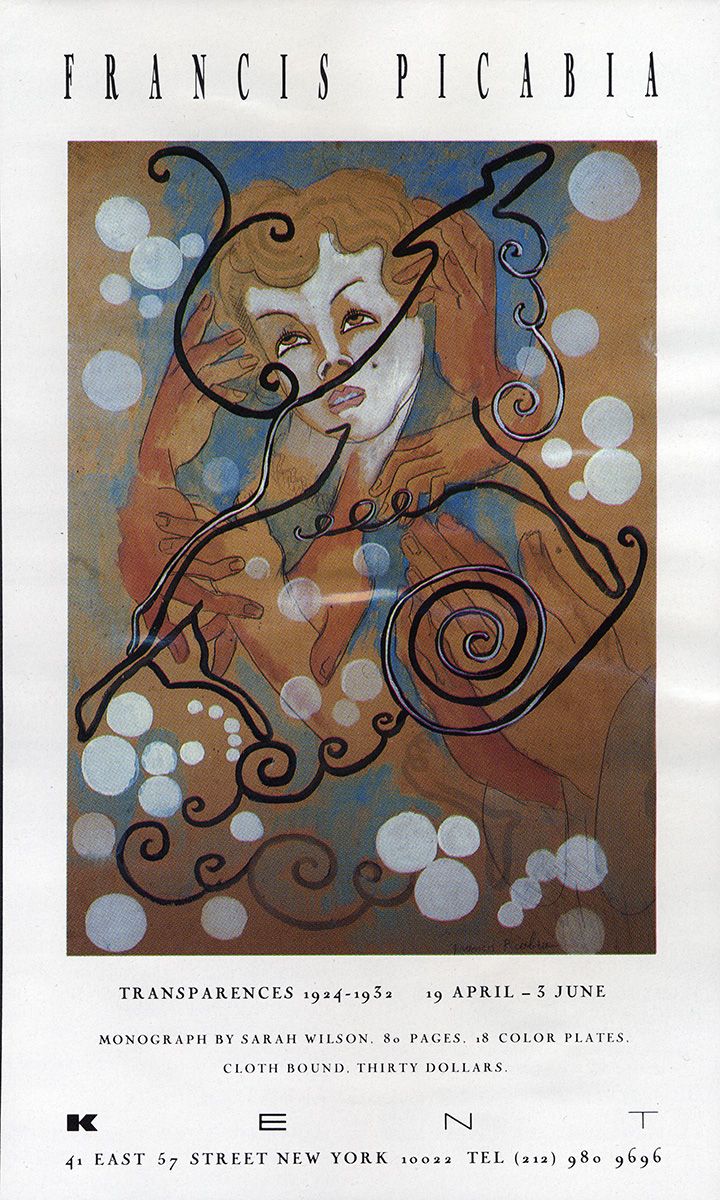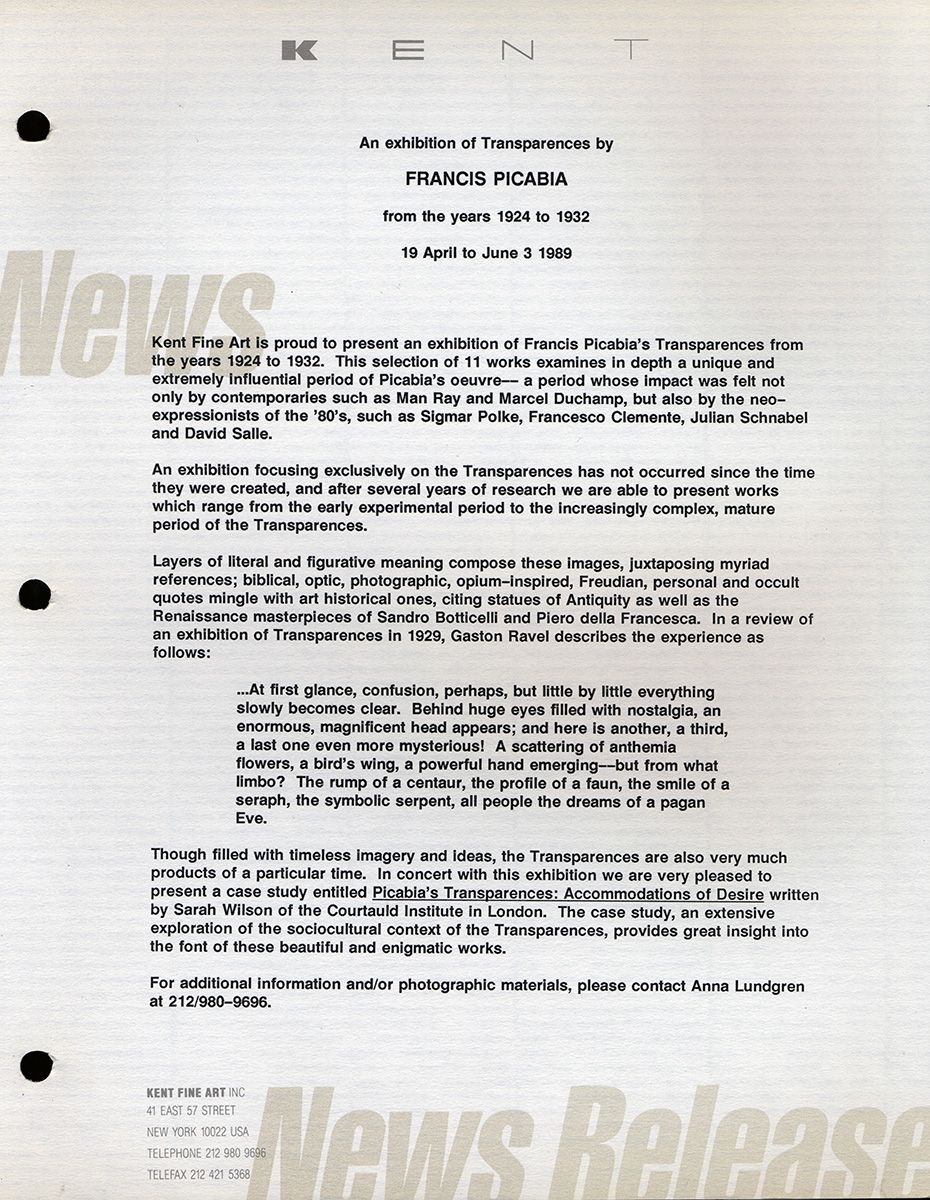Francis Picabia: Transparencies 1924–32
April 19 – June 3, 1989
Kent Fine Art is proud to present an exhibition of Francis Picabia’s Transparences from the years 1924 to 1932. This selection of 11 works examines in depth a unique and extremely influential period of Picabia’s oeuvre— a period whose impact was felt not only by contemporaries such as Man Ray and Marcel Duchamp, but also by the neo-expressionists of the ‘80s, such as Sigmar Polke, Francesco Clements, Julian Schnabel, and David Salle.
An exhibition focusing exclusively on the transparencies has not occurred since the time they were created, and after several years of research we are able to present works which range from the early experimental period to the increasingly complex, mature period of the Transparences.
Layers of literal and figurative meaning compose these images, juxtaposing myriad references; biblical, optic, photographic, opium-inspired, Freudian, personal and occult quotes mingle with art historical ones, citing statues of Antiquity as well as the Renaissance masterpieces of Sandro Botticelli and Piero della Francesca. In a review of an exhibition of Transparences in 1929, Gaston Ravel describes the experience as follows:
. . . At first glance, confusion, perhaps, but little by little everything
slowly becomes clear. Behind huge eyes filled with nostalgia,
an enormous, magnificent head appears; and here is another, a third,
a last one even more mysterious! A scattering of anthemia
flowers, a bird’s wing, a powerful hand emerging — but from what
limbo? The rump of a centaur, the profile of a faun, the smile of a
seraph, the symbolic serpent, all people the dreams of a pagan
Eve.
Though filled with timeless imagery and ideas, the Transparences are also very much products of a particular time. In concert with this exhibition we are very pleased to present a case study entitled Picabia’s Transparences: Accommodations of Desire written by Sarah Wilson of the Courtauld Institute in London. The case study, an extensive exploration of the sociocultural context of the Transparences, provides great insight into the font of these beautiful and enigmatic works.


